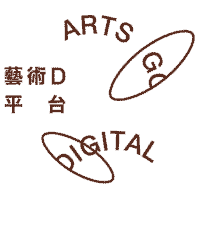Lau Ching-wa, Jess
Mapping Corner
This project is a website showing different hand drawn street maps of Hong Kong along with several recordings of the city’s sounds. The project puts special emphasis on regular community objects that are often overlooked. Because of the pandemic outbreak, we spend significantly more time inside than outside. With this website, the viewers are guided to re-visit Hong Kong from a different perspective and explore more about our culture and its history.
Read more: “Interview Series【6】Explore Community Arts through Virtual Tour on Interactive Maps”
Lau Ching-wa and Lam Kin-choi
Lau Ching-wa and Lam Kin-choi both graduated from the School of Creative Media of the City University of Hong Kong. In 2020, Lam obtained his Master of Arts degree in Children’s Book Illustration from the Cambridge School of Art. Their art focuses mainly on the pursuit and discovery of wonder through intimate aspects of daily life in the city. Their works are created through a wide range of media, including videos, drawing, print making and children’s picture books.
Integrating Urban History and Anecdotes on Soundscape Maps
“Mapping Corner” consists of six maps of different themes.
1) Fountain Map
Map of Fountains in Central
In the 1970s and 1980s, Hong Kong’s urban development and economy took off. During the period, the colonial government built a large number of fountains in the urban areas of Hong Kong Island and Kowloon. In addition to beautifying urban environment and providing leisure space in the city centres, the fountains also symbolise modernisation and prosperity. Integrated into the daily lives of citizens, many have become landmarks and memories of generations, embodying multiple meanings. Today, fountains are no longer as popular as they once were; dismantlement is likely to be their only fate. Nevertheless, being able to sit by a fountain to rest and chat amid a bustling city is still a visual and auditory enjoyment.
This map focuses on recording public fountains in the Central District. You are welcome to make your own community fountain map.
2) God Worshipping In The Temples
Map of God-worshipping in the Temples in Wan Chai
As a globalized city, Hong Kong offers space for different religions to take root and develop. The religious venues in Wan Chai District thrive in particular, with more than ten religious architectural items, including cemeteries, churches and temples. During the map-drawing investigation of Wan Chai District, we found that the Hindu Temple in Happy Valley, Khalsa Diwan Sikh Temple and Pak Tai Temple in Wan Chai maintained a very friendly and open attitude towards outsiders – they allowed us to sketch, observe and record for a long time at their venues. This map was then developed as a “Map of God-worshipping in the Temples”, detailing the interiors of these temples. We hope the public will visit them after reading the map to learn about Hong Kong’s diverse and friendly religious culture.
3) Piers On Both Shores
Map of Piers along Victoria Harbour
Facing the sea, piers symbolise exploration and connection with the world. In the past, our city’s land transport network was not fully developed. Sea transport once flourished in Hong Kong. The Victoria Harbour routes were hectic every day, transporting citizens and vehicles to and from both sides of the harbour; there were piers in Jordan, Kowloon City, Tai Kok Tsui and Sham Shui Po. However, with the opening of cross-harbour tunnels and the MTR, the demand for ferry services decreased. There are few Victoria Harbour routes left along the city centres. Some piers have even disappeared due to reclamation. With the aid of the Map of Piers along Victoria Harbour, we can explore our city’s sea culture and history, while revelling in the sea breeze.
4) Feral Pigeon Spots
Map of Feral Pigeon Spots in Hong Kong
In different corners of the city, there are always traces of feral pigeons. Not afraid of humans, feral pigeons build nests and roost everywhere. When a group of feral pigeons hover and fly in the sky of a crowded area, it would make a unique urban scenery. Meanwhile, the hygiene issue caused by pigeon droppings is an annoyance for many people. Is it possible for urban people and animals to coexist peacefully? This map covers some of the larger feral pigeon spots in Hong Kong and their corresponding trivia, so that everyone can better understand this large colony that lives with us in the city.
5) Traverse Underground
Map of Subways in Hong Kong
As of June 2020, there were 515 subways in Hong Kong – the number is still constantly increasing. Walking into a subway is like entering an unknown world. The sound, temperature, humidity and level of lightness all change instantly, mysteriously connecting and opening up different corners of the city. Subways separate people and vehicles. Apart from the frequent visits by nearby residents, runners and cyclists, it is also a place where homeless people and hawkers stay. Each subway has its own unique scenery. For this map, we have depicted a small part of the subway entrance (exit), hoping to arouse your curiosity so that you will visit these mysterious public spaces.
6) A Town of Bridges
Map of Footbridges in Tsuen Wan
As of June 2020, there were 943 footbridges in Hong Kong – the number is still constantly increasing. Diverting people and vehicles, Hong Kong’s footbridge network is one of the ways urban planners solve traffic problems. As a result, urban dwellers often stay, walk and traverse in “mid-air”. Different flyovers have derived their own unique ecology, according to the surrounding geography and community culture. This map records the footbridge network in Tsuen Wan (Hong Kong’s longest unbroken covered footbridge network system) and the scenery seen on the footbridges.






